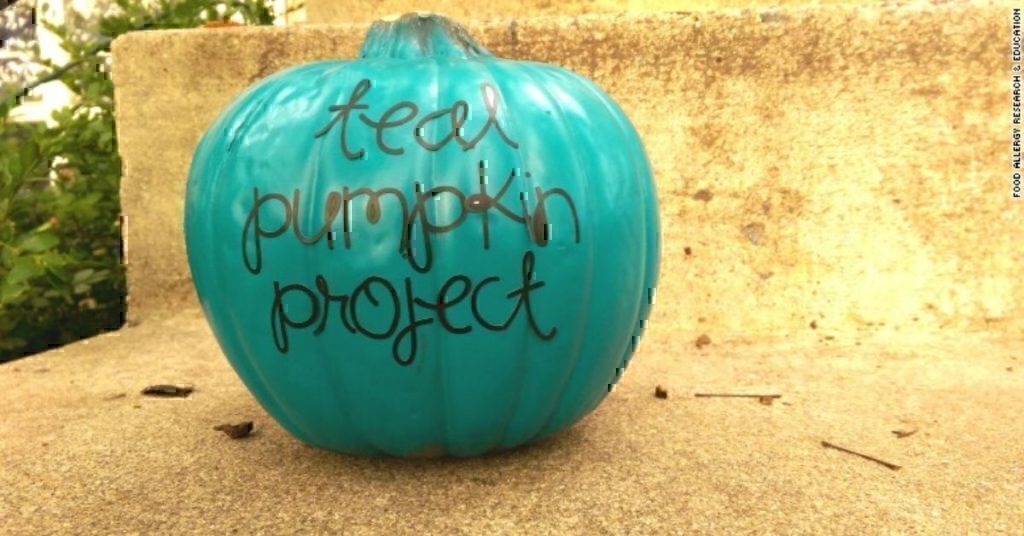From CNN.com
Halloween can be extra scary for kids with food allergies.
Chocolate is frightening if you’re allergic to milk, and a candy bar with nuts can be deadly. With eggs, soy and wheat also common allergies in kids, according to the National Institute of Allergy and Infectious Diseases, finding treats without tricks can be a challenge on Halloween night.
That’s why the Food Allergy Research & Education organization wants Halloween lovers to go teal in October.
Their Teal Pumpkin Project encourages people to place a teal-painted pumpkin outside their door if they’re offering non-foods treats, such as small toys, stickers and crayons. A flyer can also be printed from the website.
The idea took off online last year, the first time it was promoted nationally. Food Allergy Research & Education’s first Facebook post about the Teal Pumpkin Project last year, reached 2.7 million people in less than 72 hours, the organization reported.
“The Teal Pumpkin Project is an easy way to make a big impact in your community. Food allergies can be life-threatening, and they affect 1 in 13 children in the United States. We are thrilled to see so many people embracing the Teal Pumpkin Project as a way to ensure kids with food allergies can enjoy a safe, fun Halloween experience just like their friends,” says Veronica LaFemina, spokeswoman for Food Allergy Research & Education.
Families who are managing other diseases for which candy presents a problem, such as diabetes and celiac disease, have also shown support.
If you don’t want to purchase non-food items, it is helpful to separate allergy-free candy from candy that may trigger an allergic reaction if you’re handing out goodies on October 31. Cross-contamination is a concern, as many food allergies require only a small amount of the allergen to trigger a reaction.
Tips for parents
Parents should also use extra caution when checking Halloween candy if their child has an allergy.
“Checking labels becomes very pivotal because during the holidays, including Halloween, when the manufacturers make those mini small-sized candies and they’re often mass-produced on shared equipment,” says Mireille Schwartz, the founder and CEO of the Bay Area Allergy Advisory Board. “Candy that’s safe other times of the year might not be safe during Halloween.”
Carrying an epinephrine auto-injector, which treats all anaphylaxis, is also a good safety measure. Schwartz recommends checking to see if the medication is up-to-date before leaving the house, as auto-injectors typically expire within one year.
And while enjoying treats while walking door-to-door is a highlight of Halloween, it’s best if parents make sure their child avoids the sweets until they can be inspected at home.
For younger children, Schwartz adds, “You don’t want to bring up the larger, darker side of things. You just want to say you’re going to check the candy to make sure it’s safe.”


